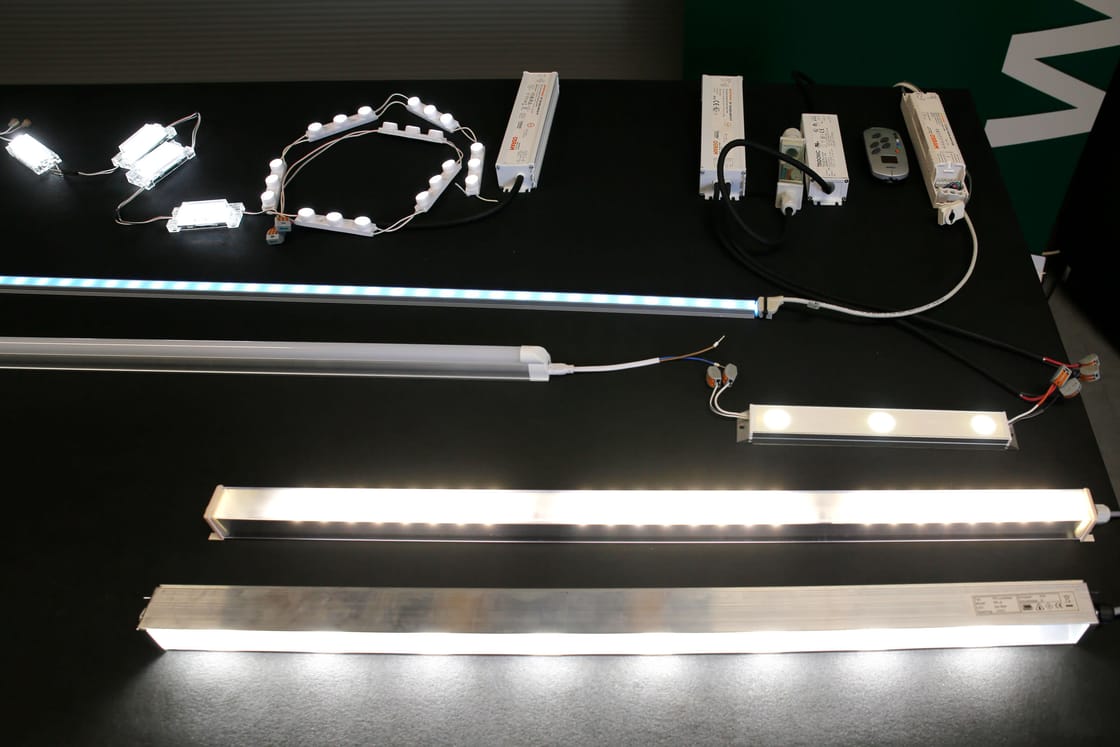Let there be light!
Light attracts attention, which is crucial for the dissemination of advertising messages. The decisive factor for perception is contrast, the interplay of light and dark, say psychologists. After all, nothing should dazzle, nor should anything worth seeing remain in the dark. How else light affects us, and which light sources emit which light, is a science of its own.
Incandescent lamp or halogen?
In practice, similar aspects will always play a role, based on the most commonly used technologies: Fluorescent tubes are relatively inexpensive to purchase and consume far less electricity than incandescent and halogen lamps. That is why they are still used in mostly large-scale retail spaces. However, if you don’t want to put your customers under constant stress with the artificial-looking neon light with its high UV content, you should use “warm-radiating” light sources. Below a color temperature of 3,300 Kelvin, however, there is an acute danger of falling asleep. Some tubes promise a color temperature of at least 5,300 Kelvin, producing an effect similar to daylight. Damaged fluorescent tubes always leave an unflattering impression and should be replaced immediately.
Energy-saving lamps, which are basically miniaturized fluorescent tubes, are also used on a large scale. The continuous color spectrum of incandescent lamps is missing from the energy-saving luminaires, just like their larger relatives. Due to their discontinuous spectrum, even energy-saving lamps that appear almost white produce color distortions. Here, the incandescent lamp with a maximum color rendering index (Ra) of 100 is still the measure of all things. However, due to their poor energy efficiency, they are now hardly produced in the EU, if at all.
Halogen lamps consume significantly less energy than incandescent lamps for the same luminous efficacy and can achieve a similarly high color rendering index to those (up to 95 Ra) . However, they are also considerably more expensive and are therefore less likely to be considered for large-scale application. If you want your goods to be presented in the most accurate colors possible, you can hardly avoid special and more expensive fluorescent tubes, halogen spotlights and LEDs.

Uniform illumination in the Notice boards due to the use of LEDs
LED – the latest trend in lighting technology
The variant semiconductor elements produce the highest amount of light in terms of the energy used, yet so far they are less suitable for diffuse illumination of everything and everyone. Their strength lies in their extremely small design and pinpoint light output. Individual aspects such as individual goods or decorative objects can thus be highlighted precisely and with acceptable color rendering values of up to 97 Ra; a continuous color change in the RGB spectrum is also possible. When placed side by side, area light sources can also be realized. Critical issues are the heat generated by the LED chips, which increases with their power, and the interaction with the electronics required to control them. In shop windows that are exposed to direct sunlight, it is therefore better to do without LEDs.
Self luminous advertising media
In the case of prefabricated, self-luminous advertising media, these technical issues have already been resolved. Here, the right intensity and a color temperature appropriate for the purpose always prevail. Textile light frames can thus make any motifs shine effortlessly. Whether on the wall or hanging from the ceiling, as a room divider or sound insulation, textile light frames are always a visual highlight. Displays, light boxes and pillars are suitable for various forms of use, e.g. as a signpost, poster pillar, info point or as a decorative frame on the wall. Due to the integrated lighting with fluorescent tubes or LEDs, the colors are always shown to their best advantage. The same applies to self-illuminating Notice boards and Glass Showcases. If the visually exciting contrast to the illuminated surroundings is given, nothing stands in the way of the impressive effect of luminous advertising media.
Learn more about the advantages and possibilities of our textile light frames with LED.
